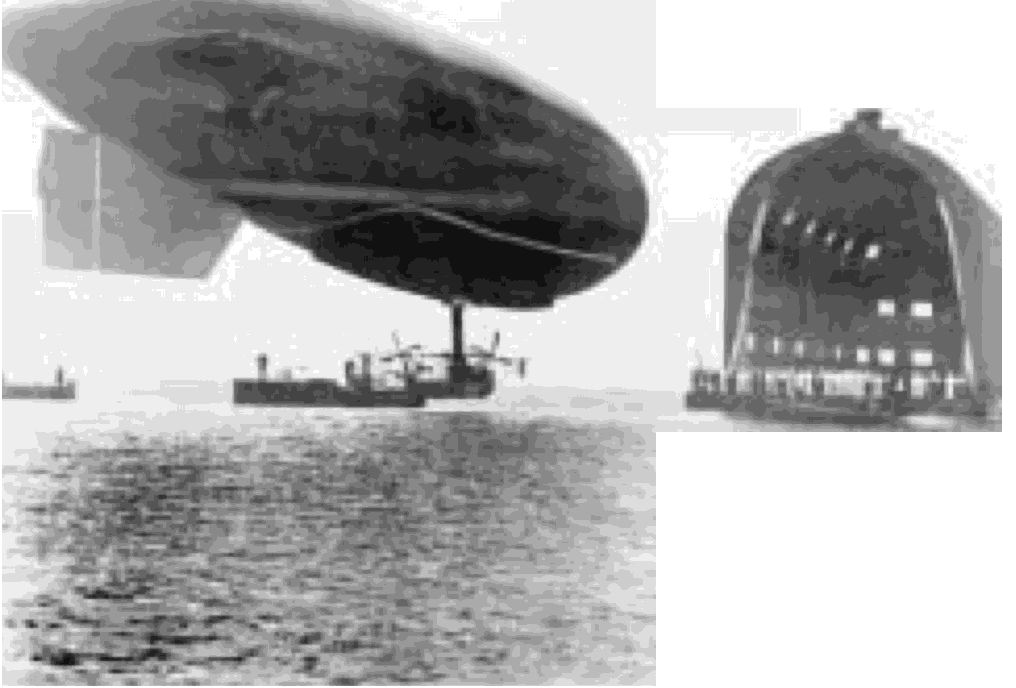
1917-Continued
_I11III.&"':,
--
- -
---
Navy's first airship approaches floating hangar /9370
18 months duration to qualify officers as pilots of
either seaplanes or dirigibles. The program also pro-
vided for training enlisted men as aviation mechanics
and for selection of a few for pilot training and qualifi-
cation as quartermaster.
4 May
The Commandant of the First Naval District
was directed to assume control of the Naval Militia
station at Squantum, Mass., for use in air training. On
the same date, arrangements were completed to take
over the Naval Militia station at Bay Shore, N.Y. These
were two of several actions taken immediately after
declaration of war to expand the flight training pro-
gram while stations of a more permanent nature were
being built.
5 May
The Secretary of War agreed to a proposal of
the Secretary of the Navy that a joint board be estab-
lished for the purpose of standardizing the design and
specifications of aircraft. The board, subsequently
established, was originally titled "Joint Technical Board
on Aircraft, except Zeppelins."
5 May
Pensacola, Fla., reported on a test in which a
Berthier machine gun, synchronized to fire through
the propeller, was fired from a Curtiss R-3 taxiing on
water and standing on the beach.
15 May
The Secretary of the Navy established an
order of precedence for work involved in the prepara-
tion for war which placed "aircraft and their equip-
ment" ninth on a list of twenty major fields of material
procurement.
UNITED STATES NAVAL AVIATION
1910-1995
25
16 May
The Aircraft Production Board was estab-
lished by resolution of the Council of National
Defense as a subsidiary agency to act in an advisory
capacity on questions of aircraft production and pro-
curement. Membership included a representative from
each service, the Navy's being Rear Admiral David W.
Taylor. Reconstitution of the Board by Act of Congress
on 1 October 1917, transferred its control to the War
and Navy Departments, enlarged its membership for
greater service representation, and changed its title to
Aircraft Board.
I
I
-1
I
17 May
Aircraft machine gun procurement- The
Chief of Naval Operations requested purchase of 50
aircraft machine guns synchronized to fire through
propellers and 50 for all-around fire.
17 May
Captain Noble E. Irwin was ordered to the
Material Branch to relieve Lieutenant John H. Towers
as Officer-in-Charge of the aviation desk in the Office
of the Chief of Naval Operations. Lieutenant Towers,
who remained as an assistant to Irwin, was given addi-
tional duty orders to the Bureau of Navigation as
Supervisor, Naval Reserve Flying Corps.
17 May
The Navy awarded a contract to the Curtiss
Exhibition Company to train 20 men of the Naval
Reserve Flying Force as aviators at the company field
at Newport News, Va.
18 May
Experimental self-sealing fuel tanks, consist-
ing of double walled galvanized iron containing layers
of felt, gum rubber and an Ivory soap-whiting paste,
were demonstrated to representatives of the Army and
Navy by the Bureau of Standards.
19 May
A distinguishing insignia for all United
States Government aircraft was described in a general
order which directed that it be placed on all naval air-
craft. The insignia called for a red disc within a white
star on a blue circular field to be displayed on the
wings and for red, white and blue vertical bands on
the rudder, with the blue forward.
19 May
The Secretary of the Navy directed that the
building (bureau) number of each aircraft be placed in
figures three inches high at the top of the white verti-
cal band on each side of the rudder. As a result of this
order, the practice of assigning numbers to aircraft, as
AH, was discontinued and the building (bureau) or
serial number became the sole means of identifying a
particular aircraft.
 |
3 |
 |